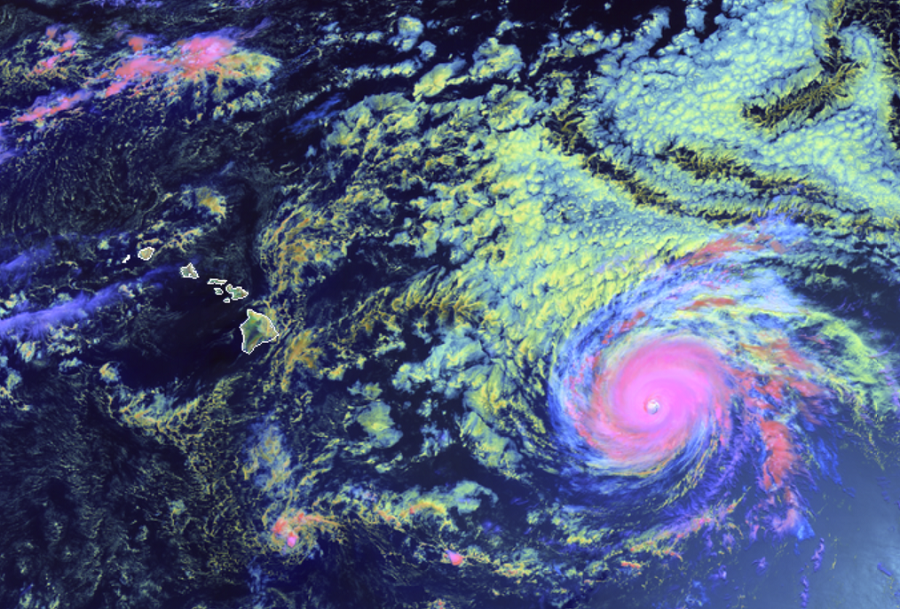
At the National Weather Service’s Honolulu office yesterday, NOAA meteorologists gathered to unveil the outlook for the upcoming hurricane season for the Central Pacific hurricane basin. Similar to the Atlantic Hurricane Season, the Central Pacific Hurricane Season begins on June 1 and runs through to the end of November.
According to the fresh outlook, there is a 60% chance of below-normal tropical cyclone activity during the Central Pacific hurricane season this year. The outlook was created by both NOAA’s Central Pacific Hurricane Center (CPHC) and NOAA’s Climate Prediction Center, divisions of the National Weather Service. The outlook also indicates a 30% chance for near-normal activity, and only a 10% chance of an above-normal season.
“This year we are predicting less activity in the Central Pacific region compared to normal seasons,” said Matthew Rosencrans, NOAA’s lead seasonal hurricane forecaster at the Climate Prediction Center. “The ongoing La Niña is likely to cause strong vertical wind shear making it more difficult for hurricanes to develop or move into the Central Pacific Ocean.”
This outlook is a general guide to the overall seasonal tropical cyclone activity in the Central Pacific basin, and does not predict whether, or how many, of these systems will affect Hawaii.“
Hurricane Iniki, a major hurricane, directly hit Kauai 30 years ago this year, and those impacted still remember the incredible destructive power Iniki delivered,” said Chris Brenchley, director of NOAA’s Central Pacific Hurricane Center. “Throughout the state of Hawaii, we must take note that the possibility of a hurricane in these islands is real. Heed the advice of public safety officials. Make a preparedness plan, and communicate it to your friends and family. Together, we can make our communities more weather ready and resilient.”
For the season as a whole, 2 to 4 tropical cyclones are predicted for the Central Pacific hurricane region, which is located north of the equator between 140°W and the International Date Line. This number includes tropical depressions, named storms and hurricanes. A near-normal season has 4 or 5 tropical cyclones.
NOAA’s Central Pacific Hurricane Center (CPHC) Director, Chris Brenchley, described to us today how his Honolulu team coordinates, collaborates, & even swaps staff with Miami-based National Hurricane Center (NHC) to keep America #HurricaneStrong💪@NWSHonolulu pic.twitter.com/W1WM2EeXeC
— the Weatherboy (@theWeatherboy) May 23, 2019
The same conditions that could set-up a below-normal hurricane season in the Pacific could set-up an active season in the Atlantic. Last month, leading tropical weather forecasters with Colorado State University’s Tropical Weather Project unveiled their Atlantic seasonal outlook. That forecast is calling for an above-normal Atlantic hurricane season with above-normal odds that tropical storms and hurricanes will landfall around the U.S. East Coast.